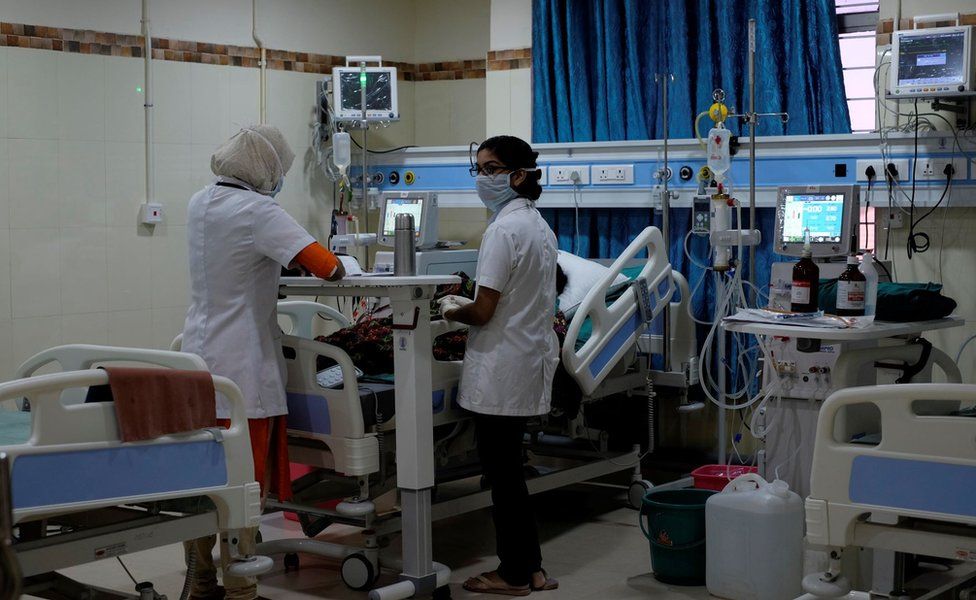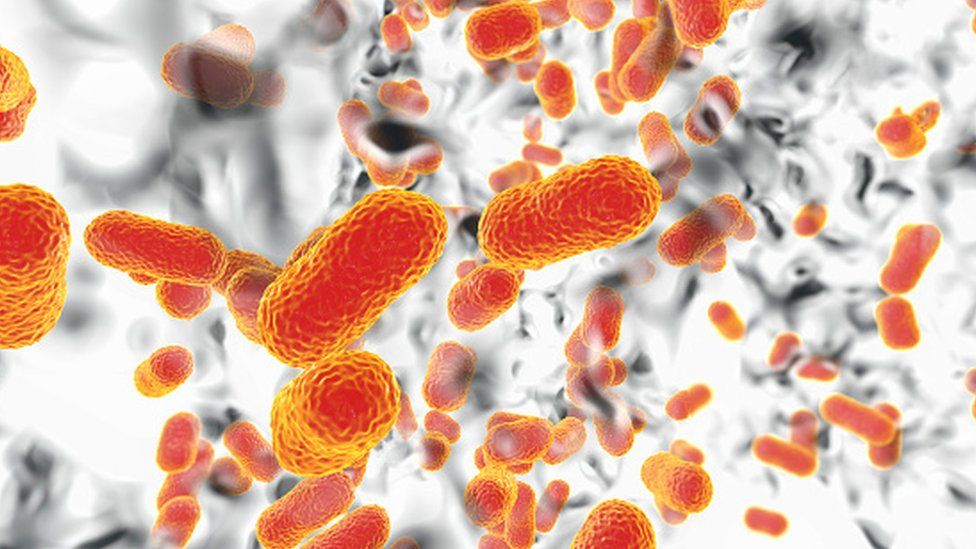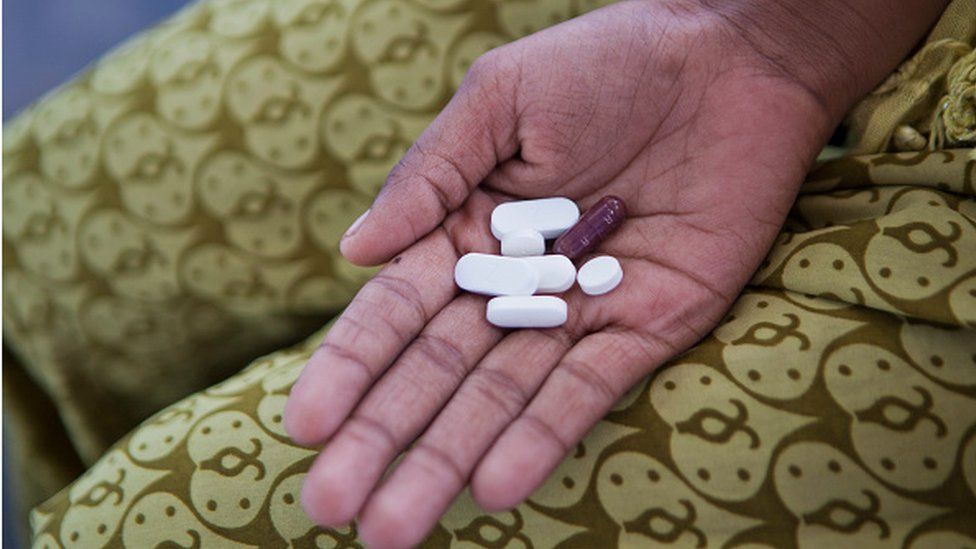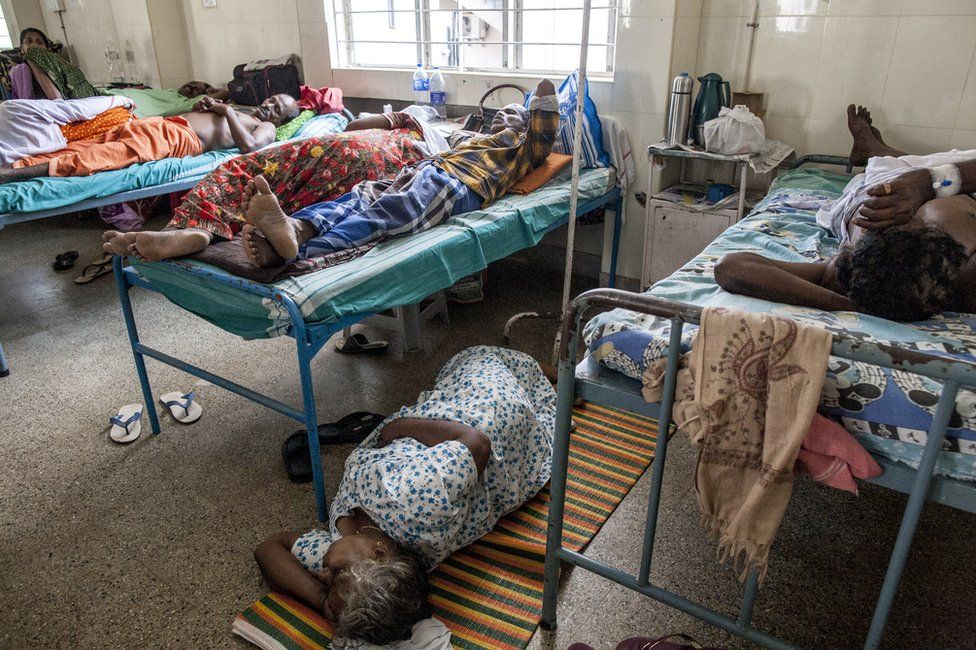At the 1,000-bed not-for-profit Kasturba Hospital in the western Indian state of Maharashtra, doctors are grappling with a rash of antibiotic-resistant “superbug infections”.

This happens when bacteria change over time and become resistant to drugs that are supposed to defeat them and cure the infections they cause.
Such resistance directly caused 1.27 million deaths worldwide in 2019, according to The Lancet, a medical journal. Antibiotics – which are considered to be the first line of defence against severe infections – did not work on most of these cases.
India is one of the countries worst hit by what doctors call “antimicrobial resistance” – antibiotic-resistant neonatal infections alone are responsible for the deaths of nearly 60,000 newborns each year. A new government report paints a startling picture of how things are getting worse.
Tests carried out at Kasturba Hospital to find out which antibiotic would be most effective in tackling five main bacterial pathogens have found that a number of key drugs were barely effective.

These pathogens include E.coli (Escherichia coli), commonly found in the intestines of humans and animals after consumption of contaminated food; Klebsiella pneumoniae, which can infect the lungs to cause pneumonia, and the blood, cuts in the skin and the lining of the brain to cause meningitis; and the deadly Staphylococcus aureus, a food-borne bacteria that can be transmitted through air droplets or aerosols.
“As almost all our patients cannot afford the higher antibiotics, they run the real risk of dying when they develop ventilator-associated pneumonia in the ICU,” Dr SP Kalantri, medical superintendent of the hospital, says.
A new report by Indian Council of Medical Research (ICMR) says that resistance to a powerful class of antibiotics called carbapenems – it defeats a number of pathogens – had risen by up to 10% in just one year alone. The report collects data on antibiotic resistance from up to 30 public and private hospitals every year.
“The reason why this is alarming is that it is a great drug to treat sepsis [a life-threatening condition] and sometimes used as a first line of treatment in hospitals for very sick patients in ICUs,” says Dr Kamini Walia, a scientist at Indian Council of Medical Research (ICMR) and lead author of the study.

Things are so worrying that only 43% of the pneumonia infections caused by one pathogen in India could be treated with first line of antibiotics in 2021, down from 65% in 2016, the ICMR report says.
Saswati Sinha, a critical care specialist in AMRI Hospital in the eastern city of Kolkata, says things are so bad that “six out of 10” patients in her ICU have drug-resistant infections. “The situation is truly alarming. We have come to a stage where you are not left with too many options to treat some of these patients.”
Resistance to antibiotics, say doctors at Kasturba Hospital, is widespread even among outpatients from villages and small towns with conditions such as pneumonia and urinary tract infections. Since most don’t carry prescriptions and can’t recall the drugs they were prescribed, doctors find it difficult to get records of their past exposure to antibiotics.
Managing such patients is an ordeal. “The situation is desperate, and desperate measures – ordering more and more antibiotics is likely to result in more harm than benefits,” says Dr Kalantri.
Public health experts believe many doctors in India prescribe antibiotics indiscriminately.

Antibiotics, for example, cannot cure viral illnesses like flu or common cold. Patients with dengue – a viral infection – and malaria – caused by a single-celled parasite – often receive antibiotics. Antibiotics continue to be prescribed for diarrheal diseases and upper respiratory infections for which they have limited value.
During the chaotic treatment of Covid-19, patients were treated with antibiotics which resulted in more adverse effects. Last year, a ICMR study of 17,534 Covid-19 patients in Indian hospitals found that more than half of them who acquired drug-resistant infections died.
Yet prescriptions for broad-spectrum antibiotics – drugs that should be reserved for tackling the most serious, hard-to-treat bacterial infections – comprise a whopping 75% of all prescriptions issued in India’s hospitals, studies have found.
To be true, doctors are not to blame entirely. In large, crowded public hospitals, they are starved of time of see patients, diagnose their illnesses, sort bacterial from viral diseases and design treatment plans, says Dr Kalantri.
A widespread lack of knowledge about antibiotics means that most patients – rural and urban – are not aware of antibiotic resistance. Even the rich and educated take antibiotics if they fall ill or pressure doctors to prescribe antibiotics.

As prices of antibiotics fall and diagnostics remain expensive, doctors prefer to prescribe drugs rather than order tests. “Doctors are sometimes not sure what they are treating, and they want to treat everything by using broad-spectrum drugs,” says Dr Walia.
Hospital infections are also to blame. Patients are often pumped with antibiotics to compensate for poor hygiene and sanitation, “because no doctor wants to lose a patient because of an infection”.
“It is a perfect storm as far as India goes. There are lots of infectious diseases in the background, lack of infection control and a lot of unnecessary consumption of antibiotics,” Ramanan Laxminarayan, director of the One Health Trust, a global public health think tank, says.
Experts believe India needs to invest more in and beef up diagnostic labs, produce more infectious diseases physicians, reduce hospital infections and train doctors on usage of antibiotics based on tests to tackle the rising threat of superbugs. Otherwise, “resistance to antibiotics has the potential of taking the form of a pandemic in near future,” warns Dr Walia.
Antibiotic resistance: A silent pandemic
- Antibiotic resistance is one of the biggest threats to global health, food security, and development today
- Antibiotic resistance occurs naturally, but misuse of antibiotics in humans and animals is accelerating the process
- A growing number of infections – such as pneumonia, tuberculosis, gonorrhoea, and salmonellosis – are becoming harder to treat as the antibiotics used to treat them become less effective.
Source: World Health Organization
